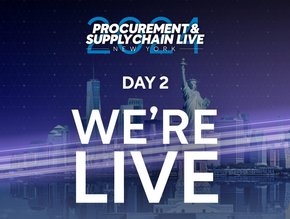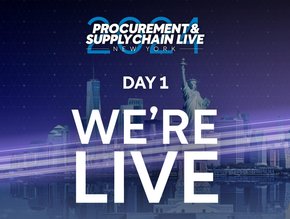Optimised Transport Vital for Cost Control and Resilience

Supply chain management is constantly facing new challenges as global trade grows more volatile and complex. Keeping costs under control while increasing agility and meeting demand is a critical challenge – and crucial to long-term success.
So how can businesses strategically optimise their supply chains for cost reduction while maintaining high performance and quality standards?
How can the latest software tools and digitisation strategies achieving cost savings with continuous supply chain optimisation?
What are the biggest challenges facing supply chain right now, especially considering the challenging past few years?
To name a few, we’ve had a pandemic, global conflicts, increased gas prices and material shortages. And looking back further, there’s globalisation and supply chain digitisation.
Supply chain is a completely different world nowadays compared to 10 years ago. With all this change, businesses need a strategy to ensure a resilient supply chain at the lowest reasonable cost.
And adopting cost optimisation in supply chain is one of the key elements.
Logistics cost optimisation options
What are some potential measures businesses could take? Where should they start?
One method is focusing on communication and collaboration with main stakeholders like suppliers and carriers to ensure end-to-end transparency.
Implementing a transportation management system (TMS) is another effective way to achieve visibility.
A TMS can help businesses avoid capacity shortages and unnecessary shipping costs by optimising orders and shipment schedules. Additionally, tracking shipments lets businesses react quickly to exceptions and replan shipments if necessary.
Transparency is a critical factor to ensure a competitive position. How important is network design in this context? And can it really make a difference for cost savings?
Supply chain network design is a game-changer. It lets businesses create a blueprint of the most efficient and cost-optimal way of moving goods.
In today’s complex environment, the ability to proactively analyse and visualise changes and disruptions in networks is critical.
Businesses can continuously review and quickly optimise their supply chains. This leads to lower costs, greater planning efficiency and resilience.
Data analytics and supply chain modelling tools help identify opportunities for cost savings in transportation networks. These tools let businesses analyse their shipment utilisation, centres of gravity and inventory allocation, as well as compare different planning scenarios to gain efficiency.
Cost reduction is important, but how can businesses ensure they don’t sacrifice quality for savings?
Early planning key to optimising transport
Transportation optimisation is critical for cost optimisation and supply chain resilience. Early planning is essential to get these benefits.
For example, transportation factors aren’t generally reflected in material planning, but considering constraints earlier in planning processes offers significant benefits. Before the scheduling agreements are set, there is more flexibility for optimisation.
Real transportation constraints like schedules, capacity and incompatibilities can be considered along with inventory levels.
This early planning avoids last-minute changes and costly back-and-forth communication to correct plans. And the flexibility lets businesses maximise the utilisation of individual shipments for cost-efficient transportation while still meeting customer demand.
4flow is a leading global provider of supply chain consulting, software and fourth-party logistics (4PL) services with over 20 offices in Europe, Asia and the Americas.
Curious about digital solutions for supply chain cost optimisation?
Learn more about the 4flow software portfolio and how we support our customers across the supply chain. We offer products for supply chain network design, transportation management, and transportation optimisation based on material planning requirements.
Christian Nieters is EVP at 4flow Software






